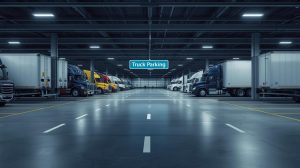Enclosed auto transport is a premium service designed to provide maximum protection for vehicles during transit. This method is particularly favored by owners of luxury, classic, exotic, and high-value cars who want to ensure their vehicles are shielded from the elements and road debris. Understanding the process of enclosed auto transport can help you make an informed decision and ensure your vehicle is transported safely and efficiently. Here is a detailed guide on what to expect from the process.
What is Enclosed Auto Transport?
Enclosed auto transport involves transporting vehicles in a fully enclosed trailer, offering a higher level of security and protection compared to open transport. These trailers are designed to shield vehicles from weather conditions, road debris, and potential damage, making it the preferred choice for transporting high-value and delicate vehicles.
Benefits of Enclosed Auto Transport
1. Maximum Protection
The primary benefit of enclosed auto transport is the maximum protection it offers. Vehicles are completely enclosed in a trailer, protecting them from rain, snow, wind, and other environmental factors.
2. Security
Enclosed trailers often come with advanced security features such as locks and alarms, reducing the risk of theft or vandalism during transit.
3. Specialized Handling
Drivers and handlers of enclosed auto transport are typically trained in handling high-value vehicles, ensuring they are loaded, transported, and unloaded with the utmost care.
4. Peace of Mind
Knowing that your vehicle is protected and handled by professionals provides peace of mind, especially when transporting rare or valuable cars.
The Enclosed Auto Transport Process
1. Requesting a Quote
The first step in the enclosed auto transport process is to request a quote from a reputable transport company. Provide details such as the make and model of your vehicle, the pick-up and delivery locations, and the desired transport dates. Many companies offer online quote forms for convenience.
2. Booking the Service
Once you receive and approve the quote, the next step is to book the service. This involves confirming the transport dates and making a deposit or full payment, depending on the company’s policies. It’s important to review the terms and conditions carefully before finalizing the booking.
3. Preparing Your Vehicle
Before your vehicle is picked up, there are several preparation steps to ensure a smooth transport process:
- Clean Your Vehicle: Cleaning your vehicle allows you to note any existing damage, which can be documented before transport.
- Remove Personal Items: Remove all personal items and valuables from the vehicle to prevent damage or loss during transit.
- Check Fluids and Battery: Ensure all fluids are at appropriate levels and the battery is fully charged.
- Document Condition: Take photos of your vehicle from various angles to document its condition before transport. This will be useful in case of any disputes about damage during transit.
4. Pick-Up
On the scheduled pick-up date, the transport driver will arrive at the designated location to load your vehicle. The driver will conduct a thorough inspection of the vehicle, noting any existing damage on a Bill of Lading, which you will need to sign. This document serves as a receipt and a condition report for your vehicle.
5. Loading the Vehicle
The vehicle is carefully loaded into the enclosed trailer using specialized equipment such as hydraulic lifts or ramps. The trailer is equipped with straps and tie-downs to secure the vehicle in place, preventing movement and damage during transit.
6. Transport
During transport, the vehicle remains in the enclosed trailer, protected from weather and road hazards. The transport company may provide updates on the status of the shipment, allowing you to track the progress of your vehicle.
7. Delivery
Upon arrival at the delivery location, the driver will unload the vehicle with the same care used during loading. You will conduct a final inspection of the vehicle to ensure it has arrived in the same condition as when it was picked up. The Bill of Lading will be signed again to confirm delivery.
8. Payment and Documentation
After confirming the condition of your vehicle, any remaining balance is paid to the transport company. Ensure you receive copies of all necessary documentation, including the final Bill of Lading and any receipts.
Factors Influencing the Cost of Enclosed Auto Transport
1. Distance
The distance between the pick-up and delivery locations is a significant factor in determining the cost of enclosed auto transport. Longer distances typically result in higher costs due to increased fuel and labor expenses.
2. Vehicle Size and Weight
Larger and heavier vehicles require more space and resources to transport, which can increase the cost. Ensure you provide accurate vehicle dimensions and weight when requesting a quote.
3. Transport Dates
The timing of your transport can also affect the cost. Peak seasons, such as summer and holidays, may result in higher prices due to increased demand. Booking in advance can help secure better rates.
4. Additional Services
Some transport companies offer additional services, such as expedited shipping, door-to-door delivery, and insurance coverage. These services can add to the overall cost but provide added convenience and peace of mind.
Tips for Choosing an Enclosed Auto Transport Company
1. Research and Reviews
Conduct thorough research on potential transport companies. Read customer reviews and ratings to gauge their reliability and quality of service. Look for companies with a proven track record of handling high-value vehicles.
2. Verify Credentials
Ensure the company is licensed and insured. Check their credentials with the Department of Transportation (DOT) and the Federal Motor Carrier Safety Administration (FMCSA). A reputable company will have no issue providing this information.
3. Compare Quotes
Obtain quotes from multiple companies to compare prices and services. Be wary of significantly low quotes, as they may indicate subpar service or hidden fees.
4. Ask Questions
Don’t hesitate to ask questions about the transport process, insurance coverage, and any additional fees. A reliable company will be transparent and willing to provide detailed information.
5. Check for Hidden Fees
Ensure you understand all costs involved in the transport process. Some companies may have hidden fees for services like fuel surcharges, tolls, or expedited shipping. Clarify these details before booking.
Common Myths About Enclosed Auto Transport
1. It’s Too Expensive
While enclosed auto transport is more costly than open transport, the added protection and peace of mind can be worth the investment, especially for high-value vehicles. Comparing quotes and services can help you find a reasonable price.
2. Only Necessary for Classic Cars
While classic cars benefit greatly from enclosed transport, any high-value, luxury, or exotic vehicle can benefit from the added protection. Enclosed transport ensures your vehicle arrives in pristine condition.
3. Takes Too Long
Enclosed auto transport service may take slightly longer due to the specialized handling and limited availability of enclosed trailers. However, the difference in transit time is often minimal, and the added protection justifies the wait.
Conclusion
Enclosed auto transport offers a premium solution for transporting high-value vehicles, providing maximum protection and peace of mind. Understanding the process, from requesting a quote to preparing your vehicle and choosing the right transport company, ensures a smooth and stress-free experience. By taking the time to research and prepare, you can ensure your vehicle arrives at its destination safely and in pristine condition. Whether you’re transporting a classic car, a luxury vehicle, or an exotic model, enclosed auto transport is a reliable and secure choice.







